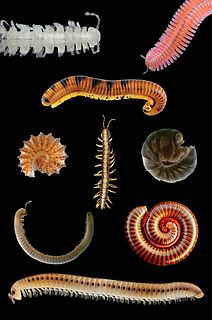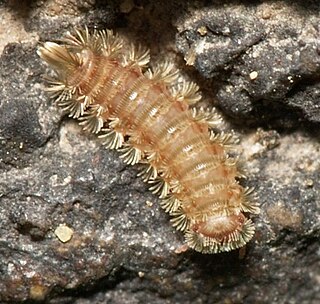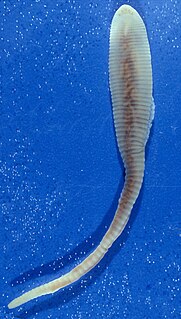 W
WThe Acari are a taxon of arachnids that contains mites and ticks. The diversity of the Acari is extraordinary and their fossil history goes back to at least the early Devonian period. Acarologists have proposed a complex set of taxonomic ranks to classify mites. In most modern treatments, the Acari are considered a subclass of the Arachnida and are composed of two or three superorders or orders: Acariformes, Parasitiformes, and Opilioacariformes; the latter is often considered a subgroup within the Parasitiformes. The monophyly of the Acari is open to debate, and the relationships of the acarines to other arachnids is not at all clear. In older treatments, the subgroups of the Acarina were placed at order rank, but as their own subdivisions have become better understood, treating them at the superorder rank is more usual.
 W
WThe name Apterygota is sometimes applied to a subclass of small, agile insects, distinguished from other insects by their lack of wings in the present and in their evolutionary history; notable examples are the silverfish, the firebrat, and the jumping bristletails. Their first known occurrence in the fossil record is during the Devonian period, 417–354 million years ago.
 W
WArthropleuridea is an extinct subclass of myriapod arthropods that flourished during the Carboniferous period, having first arose during the Silurian, and perishing due to climate change just before the Early Permian. Members are characterized by possessing diplosegement paranotal tergal lobes separated from the body axis by a suture, and by sclerotized plates buttressing the leg insertions. Despite their unique features, recent phylogenetic research suggests Arthropleuridea be included among millipedes in the class Diplopoda. The subclass contains three recognized orders, each with a single genus.
 W
WMillipedes are a group of arthropods that are characterised by having two pairs of jointed legs on most body segments; they are known scientifically as the class Diplopoda, the name being derived from this feature. Each double-legged segment is a result of two single segments fused together. Most millipedes have very elongated cylindrical or flattened bodies with more than 20 segments, while pill millipedes are shorter and can roll into a ball. Although the name "millipede" derives from the Latin for "thousand feet", no known species has 1,000; the record of 750 legs belongs to Illacme plenipes. There are approximately 12,000 named species classified into 16 orders and around 140 families, making Diplopoda the largest class of myriapods, an arthropod group which also includes centipedes and other multi-legged creatures.
 W
WDromopoda is a subclass of the arachnids, including the Opiliones (harvestmen), Scorpions, Pseudoscorpions and Solifugae. The latter three are sometimes grouped as Novogenuata. Combined morphological and molecular analyses have shown Dromopoda to be monophyletic. However, a strictly molecular analysis did not support the monophyly of Dromopoda.
 W
WLibrostoma is a subclass of trilobites.
 W
WThe Archaeognatha are an order of apterygotes, known by various common names such as jumping bristletails. Among extant insect taxa they are some of the most evolutionarily primitive; they appeared in the Middle Devonian period at about the same time as the arachnids. Specimens that closely resemble extant species have been found as both body and trace fossils in strata from the remainder of the Paleozoic Era and more recent periods. For historical reasons an alternative name for the order is Microcoryphia.
 W
WPolyxenida is an order of millipedes readily distinguished by a unique body plan consisting of a soft, non-calcified body ornamented with tufts of bristles – traits that have inspired the common names "bristly millipedes" or "pincushion millipedes". There are at least 86 species in four families worldwide, and are the only living members of the subclass Penicillata.
 W
WThe Pentastomida are an enigmatic group of parasitic arthropods commonly known as tongue worms due to the resemblance of the species of the genus Linguatula to a vertebrate tongue. They are traditionally seen as crustaceans, even if that position has been questioned.
 W
WThe Pterygota are a subclass of insects that includes the winged insects. It also includes insect orders that are secondarily wingless.